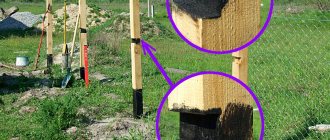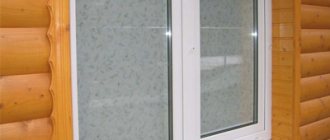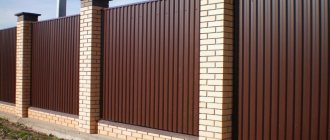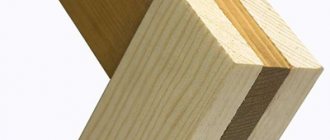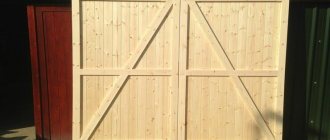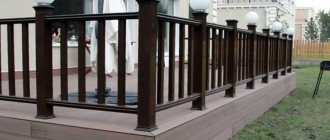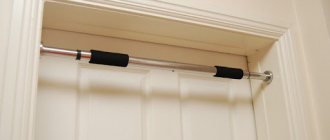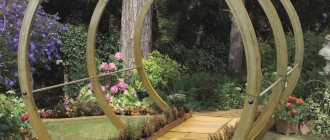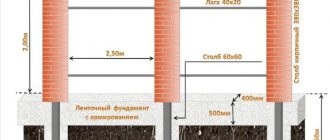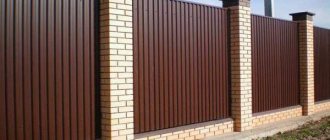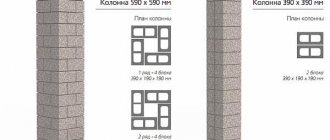Home Construction Fences
Wood remains the most common building material that owners of country houses and cottages use to construct various fences on the site. A fence between the recreation area and the beds near the cottage, a beautiful wooden fence around a country house or a low wooden picket fence around the flower beds in the yard will look harmonious. But unprotected wood is subject to rapid deterioration due to constant interaction with rain, wind, snow, and sun.
In shaded areas in cottage courtyards, in places with high humidity, boards quickly lose their original appearance and become covered with mold or are affected by fungus. How to treat fence posts and the board fence itself of a country house so that they retain their attractive appearance for more than one year? There are many ways to treat wood available, although fence posts, for example, require different protectants for the outer part and the part that goes into the ground.
Pros and cons of wooden supports
Wooden poles are a popular solution for erecting fences around the perimeter of a house area and garden plot. This is due not only to the availability and low price of the material, but also to its other advantages. Wood supports have the following advantages:
- environmental Safety;
- aesthetic appeal (with high-quality surface treatment);
- durability (while protecting wood).
A wooden fence also has its disadvantages:
- exposure to environmental factors (drying out from exposure to high air temperatures, swelling due to waterlogging during the rainy season, darkening of untreated wood);
- insect damage;
- a small selection of materials that harmoniously combine with these supports.
If the spans are decided to be made of wood, wooden poles are the best choice. They look good in combination with metal profiles and mesh materials (chain-link mesh). They harmonize with concrete and brick. Installation of the fence takes little time.
Additional measures to protect against heaving forces
If you live in a region where frost heaving forces work wonders and break records, take note of the following information. In order to protect the pillars from bulging, you need to take care of eliminating at least one of the factors - the presence of water or exposure to severe frosts. That is, you need to protect a certain space near the pillars from saturation with water and/or freezing. Of course, compared to conventional methods, this is more labor-intensive. But for some, such actions will help save the fence and protect themselves from unnecessary expenses in the future.
You can limit the flow of water using a drainage system, similar to the one used to drain water from the foundation. And reduce the impact of frost by insulating the soil around the pillars using polystyrene foam. Not all builders and home owners know about these secrets. Wrap it around and apply it.
Join our Facebook group
Manufacturing and preparation of pillars
Any wood is not suitable for a fence. The first problem that needs to be solved is the choice of material. Do-it-yourself wooden fence posts made from pine will allow you to save money. Experienced builders know that this is the most profitable material.
This tree may signal that it is under high load or is affected by other negative factors. Cracks will appear on the pole, and creaking is possible. For this reason, pine supports are always erected in mines, which makes it possible to replace the pillars in a timely manner without waiting for them to suddenly collapse.
If the load on each support is correctly calculated, the fence will stand for many years without deforming. Wooden posts can be from:
- larches;
- pine trees;
- ash;
- oak;
- ate.
The second task is to determine the optimal cross-section of the pillars. When calculating this parameter, wind and snow loads in the region of residence are taken into account. To determine the cross-section of a pillar, there are special formulas and SNIP requirements. But private developers and gardeners most often focus on the optimal pole sizes proven by practice:
- for a fence with a height of 200 cm and a distance between supports of 200-250 cm, a square beam of 10x10 cm is selected;
- for fences whose height exceeds 200 cm, the recommended support diameter is 15-20 cm made of logs or 15x15 cm made of timber.
In order to make supports yourself, you purchase unprocessed lumber of the required parameters. You can buy planed ones, but they are more expensive. Most often, 10x10 cm timber 3 meters long is chosen as pillars. But sometimes the fence design requires the installation of treated round logs. Each post is leveled with a thicknesser or plane, sanded and sanded using a sanding machine or sheets of sandpaper. The supports must be the same size and cross-section.
Before installing a wooden post, it must be protected from insects, wind, sun and moisture. To do this, the supports on all sides, including the ends, are coated 1-2 times with an antiseptic composition and painted, emphasizing the wood texture pattern.
How to calculate parameters
First you need to decide which way the steps will go. They can be on one, two or three sides. You determine this based on personal preferences and the finances that you can/want to allocate for construction. The height of the porch depends on the height of the plinth and should be 50-70 mm below the edge of the door leaf. This small step prevents precipitation from getting inside the house. Perhaps more importantly, it prevents the doors from becoming blocked if the porch rises up due to frost heaving (if the doors open outward).
Determining the dimensions of the upper platform
The layout of the porch begins with determining the size of the upper platform. If the doors open outward, you should be able to stand on the landing to open the doors. That is, its depth should be 30-40 cm greater than the width of the door leaf. According to GOST recommendations, the dimensions of the platform should be 1.5 times the width of the doorway. More is possible - less - undesirable - inconvenient.
If your doors are 80 cm wide, then the depth of the upper platform at the very minimum is 120 cm. Its width is determined based on the tastes and proportions of the house, but it should definitely be greater than the width of the doorway.
We count the number and sizes of steps
You know the height of the porch: 50-60 mm below the door leaf. The recommended height of the step (riser) is 15-20 cm. Divide the height of the porch by the height of the steps, you get the approximate number of steps. The number rarely turns out to be a whole number. The remaining centimeters can be divided between all steps or one of them can be made higher. Another option is to create a small step at the bottom, although this may be awkward.
The optimal width of the step (tread) is 25-30 cm. Knowing the number of steps, the depth of the upper platform, the depth of the steps, you can calculate the full dimensions of the porch. Using them you can already develop the foundation for the porch.
Article on the topic: How to insulate the ceiling in an old wooden house
When choosing the parameters of the steps, you must adhere to the recommendations of SNiP: the sum of the tread and double riser should be in the range of 600-640 mm. For example, you calculated that the height of the step (riser) is 17 cm, the tread (depth) is 280 mm. After performing the calculations we get: 170 mm * 2+280 mm = 620 mm. We fit into the recommended parameters, which means there is no need to change anything.
Installation of pillars
In order to properly install the pole, it is important to ensure high-quality waterproofing of the part that will be immersed in the ground. Wooden supports that are not protected from contact with the soil will last 5-7 years and will break due to winds or other loads. The breaking point is always located either at ground level or at a small height from it.
Dig
The construction of fences provides several ways to install supports. The simplest and fastest is burying. The pit should be 20-30 cm deep than the freezing point of the soil in the construction region. This indicator is also taken into account when choosing the length of lumber. The bottom of the recess is leveled, a drainage “cushion” is made: 5-7 cm of sand and 10-15 cm of gravel. It is necessary to remove moisture from the soil adjacent to the support. Drainage will also compensate for soil movements during periods of freezing and thawing, and a fence with wooden supports will not move.
The pre-treated post is immersed in the hole and leveled vertically using a bubble level. If the work is performed without an assistant, the support will need to be fixed in this position. The problem is solved with the help of stones and jibs. Then backfill is performed: the hole is filled with the excavated soil and compacted.
Hammering
It is not often that a wooden post is hammered. This installation method is used when installing metal supports. They have higher compressive and bending strength and are resistant to mechanical stress. But if the soil is soft enough, the wood is strong and you have all the necessary tools (sledgehammer or headstock), you can hammer in a wood pole. It is advisable to have an assistant to perform this work.
A beam no more than 1.5 m long can be driven into the ground with a sledgehammer without much difficulty. For a support with a height of more than 1.5 m, a “grandmother” will be required. This is a self-made device from a piece of metal pipe with a weighted lower part. It is centered over the upper end of the pillar, lifted above it using levers and released. A series of such blows drives the pillar into the ground.
Zabutovka
Backfilling fence posts is a method that is in many ways similar to burying. You will need to dig a hole, form a drainage “cushion” and install a beam or log at the bottom. After which the pillar must be leveled, covering it with jibs on all sides. Backfilling involves backfilling with gravel or crushed stone. It is advisable to use stones of medium or small fraction. Crushed stone is poured into the hole to a height of 15-20 cm, spilled with water and compacted using a crowbar or a piece of timber. In this way, the pit is filled layer by layer to the ground level.
Using a metal pipe
A wooden fence with timber posts can be reinforced with metal pipes. This will prevent contact of wood with the ground, which will extend the life of the fence. The cross-section of the pipe should be 2-3 cm larger than the cross-section of the timber or the diameter of the log. The optimal metal thickness is 4-5 mm. The length of the pipe should be such that, immersed in the hole, it rises 20-30 cm above the ground level.
Installation of wooden fence posts using metal pipes provides two options for attaching timber (logs) to metal:
- attracting with clamps a wooden support raised above the ground level to a pipe dug into the ground from its outer side;
- attraction of beams immersed inside the pipe with pins.
Before starting installation work, we must not forget about the need to treat the metal with an anti-corrosion compound.
Concreting
Wooden fence posts can be installed by concreting. This is the most reliable installation method, but it must be done correctly. Simply filling a dug hole with concrete will not ensure reliable installation of the support. The cement-sand lump will hold the beam, but it (the lump) itself will be mobile in the soil, which is always softer than concrete.
In order to prevent vertical deflection of the support, reinforcement bars with a cross-section of at least 6 mm are driven into the walls of the pit. For greater reliability, you can make two tiers of these metal rods. Sequence of work:
- dig a hole;
- level its bottom;
- form a drainage “cushion”;
- drive reinforcement into the walls of the pit;
- install a pillar on the bottom;
- strengthen it with jibs;
- concrete is poured in layers, compacting it with a metal rod (they pierce the cement-sand mortar so that air comes out of it);
- cover fresh concrete with damp burlap or polyethylene.
Wood selection
When installed, the pillars are dug into the ground, which means that the tree will be exposed to dampness and temperature changes. Softwoods deteriorate more quickly in such conditions, so they are not suitable for posts. The best posts for a fence or foundation will be larch or pine logs - they have a very dense structure, are less susceptible to rotting and are almost not damaged by insects. In addition, when drying, such pillars practically do not deform, unlike birch, aspen and maple logs.
Oak or beech logs are also very dense and resistant to negative impacts, but their cost is too high and not justified for such use. Common and cheaper coniferous species are significantly inferior in quality to pine, and are used very rarely for posts. Therefore, if you need high-quality and inexpensive wooden poles, the best choice would be pine or larch.
Wooden pillars
An important point in the selection of wood is its moisture content. You should not buy wood that is too fresh - if it is dried incorrectly, deformations can occur that cannot be straightened out later. In addition, the wood may crack, which is also undesirable. It is best to purchase logs with a moisture content of no more than 20%, without visible cracks, chips, or rotten areas. Such defects significantly reduce the durability of the pillars.
How to treat wooden fence posts
In order to properly make a wooden fence, it is necessary to treat the wood with compounds that prevent it from rotting. These can be not only antiseptics (Senezh, Pirilax, Aquatex), but also inexpensive oils and solutions.
Underground part
Non-expert gardeners and individual developers often recommend burning the lower part of the support in order to eliminate its putrefactive properties. This is a wrong decision that does not bring the desired result. The evidence base is given in construction textbooks published in Soviet times.
To prevent wooden fence posts immersed in the ground from rotting, you can use any of the following protection methods:
- treat with copper sulfate solution;
- coat with several layers of machine oil;
- pour creisote;
- wrap with roofing felt;
- cover with bitumen.
Liquid impregnations impregnate the impregnated material and protect the wood from moisture. In this way, a timber or log is prepared for installation in the ground. The wood should dry well.
Upper part
To protect the outer part of the supports, you can use not only antifungal and antiseptic solutions. Most paints and varnishes contain additives that prevent the processes of rotting and destruction of wood by insects. The surfaces of the supports can be treated with a paint brush or spray gun.
Products called “impregnating primer” will also work. This is the same antiseptic, but made in European countries. These solutions contain components that provide reliable protection against blue stains, mold, mildew, and insects. Treating wooden posts with this primer guarantees their long service life.
Taking into account all the rules for selecting, preparing and installing fence supports, you can build a beautiful and reliable fence yourself. With timely repairs and renewal of the protective layer, it will serve more than one generation of home or cottage owners.
The first signs of rot in the boards
There are many types of putrefactive fungi: Stereum, Daedalea, Polyporus, Lenzites, Fomes and hundreds of others; the appearance is not so important, especially since the treatment of fence boards against rotting is the same.
However, all fungi can be roughly divided into three types, based on the type of decay they cause:
- white rot, the main symptom of which is the appearance of yellow, gray or white stains on the wooden surface, which gradually soften it, making it wet and fibrous;
- brown (brown) rot - because of it, the wood begins to chip and crumble, turning into unusable dust;
- soft rot is typical for damp conditions: in the house it attacks bathrooms, saunas and kitchens, fences - in places adjacent to wet soil, for example, in the shade.
Article on the topic: Which heating is better for a wooden house if there is no gas
Signs of rot are a change in surface color, the appearance of cracks, destruction of the structure and a decrease in strength.
There are several stages of destruction:
- initial, which is characterized by a change in color without a change in structure: the fungus does not affect the shell;
- developed, with which pits, scratches, and cracks appear in the surface;
- final, with final destruction of the structure and disintegration of wood
At the initial stage, it is still possible to stop the destruction on your own; further stages require deep impregnation in industrial conditions: the boards are placed in special baths and allowed to acidify. In this case, we are not talking about how to treat a wooden fence, but about what and when to replace it with - it will be cheaper and more durable.
Wood rots more strongly at air humidity of 75-100%, large temperature changes and when the boards are not dried enough, their moisture exceeds 15%. If the latter can be dealt with by purchasing from trusted suppliers, then the first two points cannot be dealt with. In the changeable and humid climate of central Russia, wooden fences always run the risk of becoming infected with fungus and quickly becoming unusable.
Therefore, careful and regular treatment of posts to prevent rotting is something that every owner of a wooden fence should take care of.
Protective means for the main part
It is not only the lower part of the pillar that requires special protection. The main support, which is located on top of the ground, must also be protected from the negative influence of the environment. This applies to antiseptics and dyes.
To choose the right coating for poles, you need to decide what exactly you want to get in the end. If you want to preserve the natural beauty of wood, then choose substances from the collection of Pinotex, Belinka or AVIS varnish coating. If you need to obtain a bright and stable color palette, pay attention to domestic oil paints using zinc white.
Before painting, wooden surfaces must be primed. A pillar that has reliable protection will last a long time. And the fence will delight you for several decades.
